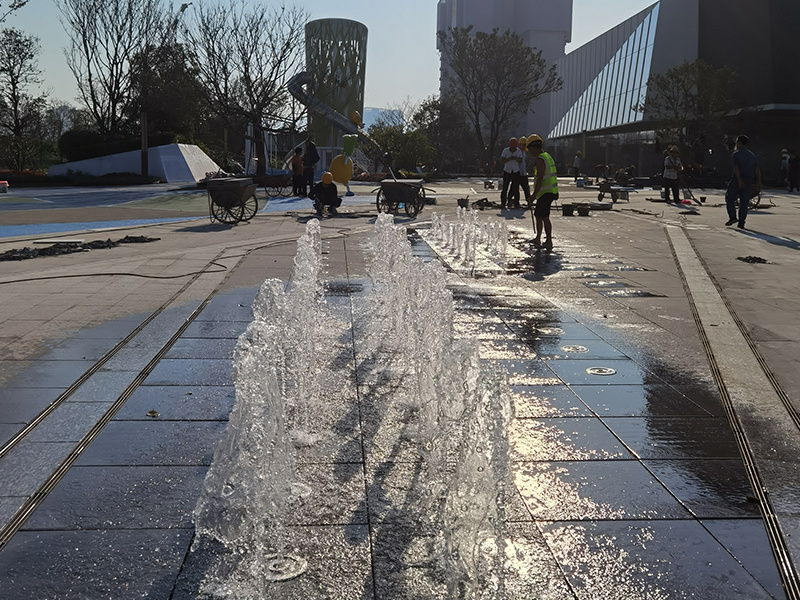Enhance Aesthetics: How a Public Square Dry Fountain Can Revitalize Your Area
Apr 24,2025

Enhance Aesthetics: How a Public Square Dry Fountain Can Revitalize Your Area
Table of Contents
- 1. Introduction to Public Square Dry Fountains
- 2. Benefits of Installing a Dry Fountain in Public Spaces
- 3. Key Design Considerations for Dry Fountains
- 4. Environmental Benefits of Dry Fountains
- 5. Enhancing Community Engagement with Dry Fountains
- 6. Essential Maintenance Practices for Longevity
- 7. Successful Case Studies of Dry Fountains
- 8. Conclusion
- 9. Frequently Asked Questions (FAQs)
1. Introduction to Public Square Dry Fountains
Public squares serve as vital centers of community life, fostering social interaction and enhancing urban aesthetics. One of the most captivating features that can be introduced into these areas is a **dry fountain**. Unlike traditional fountains that use water continuously, dry fountains utilize innovative designs to create stunning visual effects without the need for constant water flow. This article explores how **public square dry fountains** can revitalize your area, enhancing its beauty and functionality.
2. Benefits of Installing a Dry Fountain in Public Spaces
Integrating a dry fountain into a public square offers numerous benefits that go beyond mere decoration. Here are several key advantages:
2.1 Aesthetic Appeal
Dry fountains can transform a bland space into a vibrant, artistic environment. They create focal points that draw attention, allowing for unique design opportunities. The interplay of light, textures, and patterns can evoke emotions and enhance the overall atmosphere of the area.
2.2 Improved Community Interaction
A well-placed dry fountain becomes a gathering point for community members. It encourages people to spend more time outdoors, facilitating social interaction and community bonding. Families, children, and tourists are naturally drawn to these installations, enriching the locale’s social fabric.
2.3 Versatile Design Options
Dry fountains come in various styles, shapes, and sizes, making them adaptable to different architectural and landscape designs. Whether it’s a minimalist modern structure or a classical design, there’s a dry fountain that can complement any public square.
3. Key Design Considerations for Dry Fountains
When planning to install a dry fountain, several design elements must be kept in mind to ensure that it meets the community's needs and enhances the environment effectively.
3.1 Location and Placement
The fountain's location is critical. It should be easily accessible and visible from various vantage points. Consider placing it in areas with high foot traffic, such as near cafes, shops, or public transportation hubs.
3.2 Material Selection
The materials used for constructing a dry fountain should be durable and weather-resistant. Options such as stone, concrete, and metal can provide longevity while enhancing the aesthetic appeal. Additionally, they should be able to withstand the elements while maintaining their visual integrity.
3.3 Safety Features
Safety must be a primary concern when designing public fountains. Incorporating features such as non-slip surfaces and smooth edges helps prevent accidents, ensuring that the space remains welcoming and safe for all users.
3.4 Integration with Surrounding Elements
A dry fountain should harmonize with its environment. Consider how it interacts with nearby plants, benches, and pathways. Complementary landscaping can enhance its beauty and functionality, making the fountain a cohesive part of the public square.
4. Environmental Benefits of Dry Fountains
Beyond their aesthetic and social advantages, dry fountains also contribute positively to the environment.
4.1 Water Conservation
Dry fountains are designed to minimize water usage, making them an eco-friendly alternative to traditional fountains. They often use a recirculating system that requires less water, contributing to overall conservation efforts.
4.2 Microclimate Creation
The presence of a dry fountain can create a microclimate in urban spaces. The evaporation from surrounding plants and materials can lower temperatures, providing relief during hot weather and enhancing the comfort of those who gather nearby.
4.3 Biodiversity Support
By integrating a dry fountain with landscaping that includes native plants, communities can support local biodiversity. These plants can attract various pollinators, helping to maintain ecological balance and promote a healthier urban environment.
5. Enhancing Community Engagement with Dry Fountains
Dry fountains do more than beautify a space; they actively promote community engagement in several ways.
5.1 Hosting Events and Activities
A dry fountain can serve as a venue for community events such as outdoor concerts, art displays, and cultural festivals. Its presence can attract visitors and create opportunities for local businesses, enhancing community spirit.
5.2 Educational Opportunities
Dry fountains can also facilitate educational experiences about water conservation, environmental stewardship, and art. Workshops and informative displays can transform a simple fountain into a platform for learning and engagement.
5.3 A Place for Reflection and Relaxation
Offering a serene space, dry fountains encourage individuals to pause and enjoy their surroundings. This aspect is crucial for mental well-being, allowing residents to connect with nature and each other in their busy urban environments.
6. Essential Maintenance Practices for Longevity
To ensure that a dry fountain remains a vibrant part of the community, regular maintenance is essential.
6.1 Routine Inspections
Regular inspections can identify potential issues before they become significant problems. Check for wear and tear on materials, ensuring that all components are in good working order.
6.2 Cleaning Practices
Keeping the fountain clean is vital for both aesthetics and functionality. Periodic cleaning schedules should include removing debris, inspecting drainage systems, and checking for any signs of algae or mold growth.
6.3 Seasonal Preparations
Preparing the fountain for seasonal changes, especially in areas that experience freezing temperatures, is crucial. Proper winterization techniques can prevent damage and extend the fountain's lifespan.
7. Successful Case Studies of Dry Fountains
Examining successful implementations of dry fountains can provide valuable insights into their impact.
7.1 The Urban Oasis in Denver
In Denver, a public square was transformed with the installation of a striking dry fountain that features interactive water play elements. This installation has become a community hotspot, drawing families and tourists alike, fostering a sense of community and improving local business foot traffic.
7.2 The Plaza Revitalization in San Francisco
San Francisco redeveloped a neglected plaza by incorporating a modern dry fountain surrounded by native plant landscaping. This project not only beautified the space but also educated the public about sustainability practices, earning praise from both residents and environmentalists.
7.3 The Cultural Landmark in Chicago
A dry fountain in Chicago's cultural district has become a landmark for art exhibitions and community gatherings. Its design features integrated seating and lighting, creating a multifunctional space that enhances community engagement and promotes cultural activities.
8. Conclusion
Incorporating a **public square dry fountain** into urban design offers transformative benefits that can enhance aesthetics, promote community engagement, and foster environmental stewardship. From their striking visual impact to their role in social interaction, dry fountains serve as essential elements in revitalizing public spaces. As cities evolve, embracing innovative installations like dry fountains can lead to more vibrant, inclusive, and sustainable environments for all.
9. Frequently Asked Questions (FAQs)
9.1 What is a dry fountain?
A dry fountain is a type of fountain that does not continuously flow water. Instead, it uses innovative design elements to create visual effects without the need for a constant water source.
9.2 How do dry fountains conserve water?
Dry fountains often utilize a recirculating water system, significantly reducing the amount of water required compared to traditional fountains. Some designs also rely solely on atmospheric moisture.
9.3 What maintenance do dry fountains require?
Regular maintenance includes routine inspections, cleaning, and seasonal preparations to protect the fountain from weather-related damage.
9.4 Can dry fountains be used in all climates?
Yes, dry fountains can be designed to withstand various climates, but certain materials and designs may be more suitable for specific environmental conditions.
9.5 How do dry fountains promote community engagement?
By serving as focal points for social interaction, hosting events, and providing educational opportunities, dry fountains enhance community engagement and interaction in public spaces.
Contact Us
E-mail :
Phone/WhatsApp:
Address:
No. 30 Yongxing Street, Shawan Town, Panyu District, Guangzhou City, Guangdong Province







